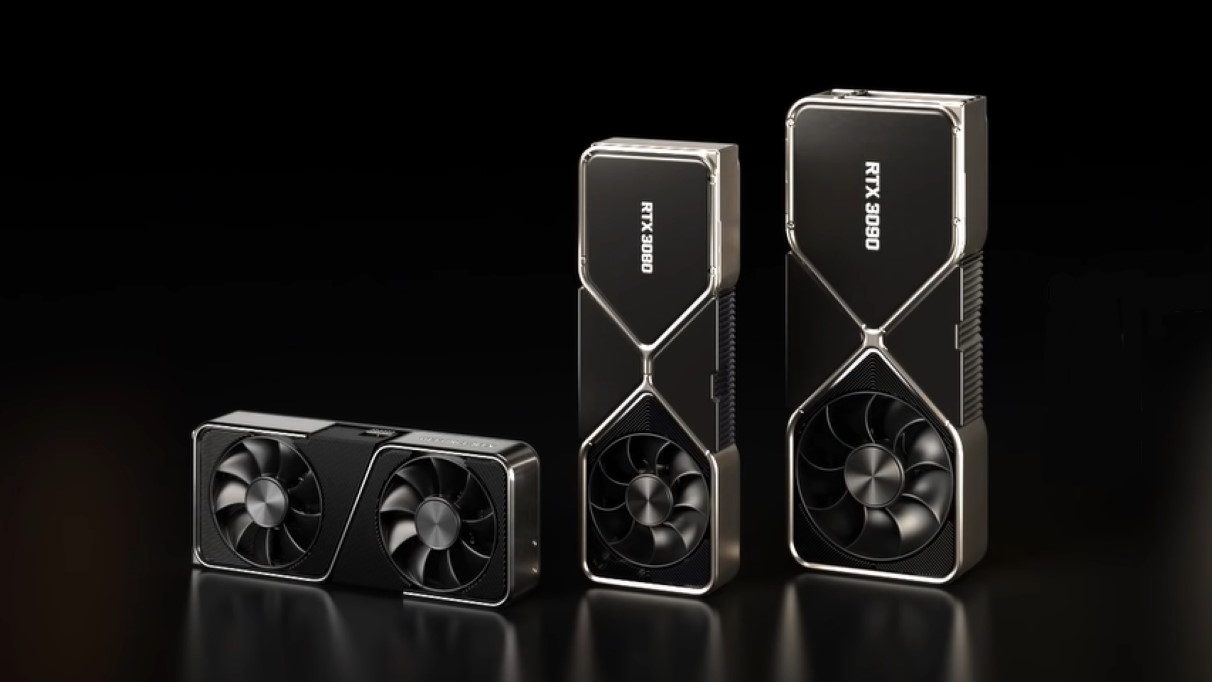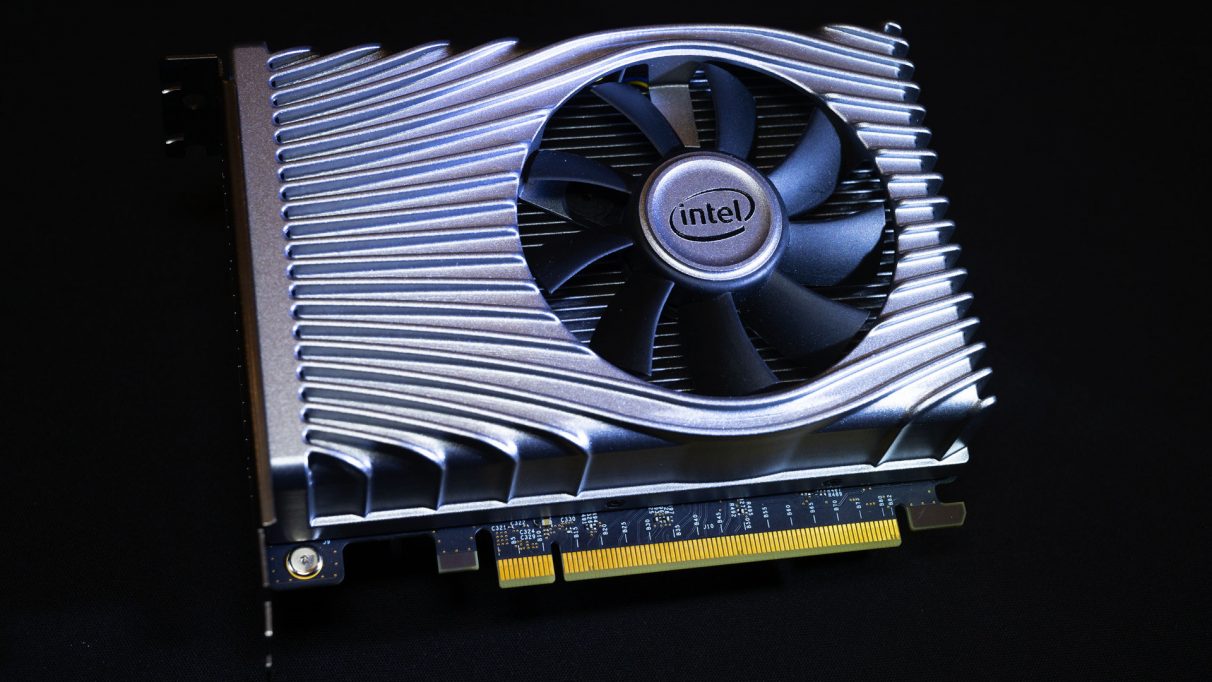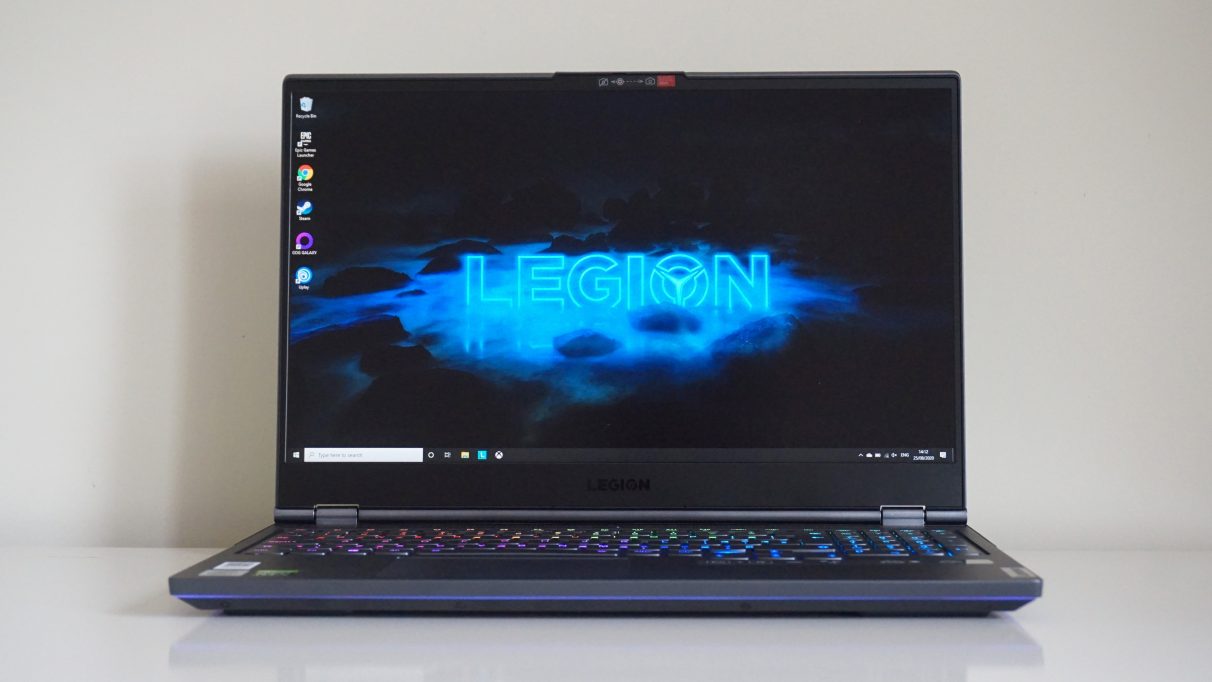The bulk of this year’s new PC gaming hardware announcements will likely come next week when CES 2021 (aka: tech Christmas) starts on January 11th. It will be here that hardware makers unveil the precise line-up of new gaming monitors, laptops, SSDs and the like, and I’ll be covering all those announcements in detail next week. For now, though, here are the broad strokes of what’s coming up in hardware land for 2021, and man alive it looks pretty darn exciting. If you’ve been thinking about upgrading your PC recently, this is almost certainly going to be the year to do it.
Actually being able to buy last year’s best hardware
Between the launches of AMD’s Ryzen 5000 CPUs, their ray tracing-capable Radeon RX 6000 graphics cards and Nvidia’s next-gen RTX 30 series GPUs, the end of last year should have been a great time to upgrade your PC… if only we’d actually been able to buy the damn things before they all got snapped up by bots. AMD’s Ryzen 5 5600X, for example, obliterated its Intel competition in my CPU gaming tests when it first came out at the beginning of November, and Nvidia’s GeForce RTX 3060 Ti, RTX 3070 and RTX 3080 GPUs all showed huge performance gains over their RTX 20-series predecessors. The only problem was they all sold out in seconds and prices have remained eye-wateringly high ever since. However, as with the great GPU drought of 2017 / 2018, the stock shortages that plagued the back half of 2020 will (hopefully) eventually settle down in 2021, although quite when we still don’t know. Whereas 2017 / 2018’s price hikes were driven by a surge in cryptocurrency mining, many of today’s stock problems stem from Covid-related delays at the beginning of last year. AMD and Nvidia have both said they’re working as hard as they can to meet demand, but it may well take another few months for everything to settle down again. Once it does, though, would-be upgraders are going to have a grand old time kitting out their new PC. Of course, I’ll be keeping my eyes peeled every week for new stock arrivals in our regularly updated graphics card deals and CPU deals posts, so make sure you look out for those if you’re looking to get your hands on one.
Intel’s 11th Gen Rocket Lake CPUs
Of course, if you’re thinking about upgrading your CPU and motherboard this year, then it’s probably best to wait until Intel release their new 11th Gen Rocket Lake CPUs anyway, which are currently due out sometime before the end of March 2021. While Intel’s existing crop of 10th Gen Comet Lake CPUs offer some great performance boosts over their 8th and 9th Gen Coffee Lake chips, Rocket Lake introduces some crucial new bits of tech that will make it a much better foundation for a ’next-gen’ PC than what’s come before. Chief among them is PCIe 4.0 support, which doubles the amount of bandwidth available in your PC for churning through all that data. It’s been a staple over on AMD’s side of the fence for a few years now, but 2021 will finally bring Intel up to speed on it, too, letting you take full advantage of new PCIe 4.0 SSDs such as Samsung’s 980 Pro and WD’s Black SN850, as well as PCIe 4.0-capable graphics cards. PCIe 4.0 support will also be key to unlocking the potential of Microsoft’s upcoming DirectStorage tech (more on that below), which is set to, among other things, dramatically reduce game loading times to bring them more in line with their super-fast console counterparts. You’ll likely need a PCIe 4.0 SSD to take advantage of it, but at least it won’t be limited to just AMD systems anymore. To help ensure everyone gets the full whack of what PCIe 4.0 has to offer, Intel have confirmed their Rocket Lake CPUs will be accompanied by a new 500-series motherboard chipset as well. It’s possible that their existing Z490 motherboards might get a BIOS update to add PCIe 4.0 support in at a later date (assuming Intel don’t also switch to another new socket type for Rocket Lake, of course), but unless you bought into Comet Lake last year and are desperate to upgrade again already, I’d advise waiting for a proper 500-series board to ensure full compatibility. I’m also just keen to see how Rocket Lake’s gaming performance compares to AMD’s recently released Ryzen 5000 CPUs. While AMD’s new processors were miles ahead of Intel’s 10th Gen Comet Lake chips when I tested them at the end of last year, I’ll be dead impressed if Intel manage to reclaim their crown with their Rocket Lake line-up, as it’ll not only mean substantial gen-on-gen speed improvements, but an even sturdier gaming foundation that will set you up for years to come.
Intel’s Xe graphics cards
2021 is also the year that Intel’s much-anticipated Xe GPUs will arrive, too, bringing some much needed competition to Nvidia and AMD in the old graphics card arena. There’s still a lot we don’t know about Intel’s Xe GPUs, such as how many they’re going to produce and how much they’re going to cost, but we do know they’ll come with GDDR6 memory and have accelerated ray tracing support. This should put them on a pretty level playing field with Nvidia’s RTX 30 GPUs and AMD’s Radeon RX 6000 cards, and I can’t wait to see how they stack up against each other. Fingers crossed we’ll hear more about what Intel have in store for their Xe GPUs in their CES 2021 press conference next week on Monday January 11th at 1pm PST (9pm GMT).
Nvidia’s RTX 30 GPUs coming to gaming laptops
It’s not 100% confirmed yet, but I’ll eat my RTX 3080 if Nvidia’s new GPUs don’t also end up coming to gaming laptops this year. It’s one of those inevitable hardware improvements you know is bound to happen at some point, and I’m excited to see what they’re going to do for all those increasingly high 300Hz refresh rate displays knocking about these days, as well as on-the-go ray tracing. I mean, with the world still being what it is at the moment, it’s not like many of us will need high-powered laptops for playing games away from home, but if 2020 taught me anything, it’s that being able to play games in a different room in my house is an absolute god-send when you’re working from home all the time. It’s nice to have that separation sometimes, and a gaming laptop is a great way of achieving it if you don’t want another PC clogging up your living room. Again, we’ll likely hear more about which of Nvidia’s RTX 30 series will be getting the laptop treatment during their CES press conference next week on Tuesday January 12th at 9am PST (5pm GMT), so stay tuned for more info then.
Cheaper Nvidia RTX 30 and AMD RX 6000 desktop GPUs
Speaking of Nvidia’s CES 2021 press conference, here’s hoping we also get a glimpse of what they’ve got lined up for their mainstream desktop RTX 30 family as well. The RTX 3060 Ti is a stonking graphics card for £369 / $399, but it’s still pretty expensive as these things go, and it would be great to see Nvidia’s RTX line-up extend even further down into potential RTX 3050 territory. Of course, the RTX 3060 Ti’s name alone suggests there will at least be a regular RTX 3060 at some point, but the dream is to have those RT cores running through Nvidia’s entire next-gen line-up. The same goes for the rest of AMD’s RX 6000 family. We’ve already seen what the RX 6800 and RX 6800 XT can do for the 1440p and 4K end of the market, and I’m excited to see what their budget line-up of (presumably) RX 6700 and maybe even RX 6600 and RX 6500 cards can do for the 1080p end of the spectrum. Again, it would be great if we got ray tracing support across the board here, but we’ll have to wait and see if this does indeed come to fruition. AMD’s CEO Dr Lisa Su is due to give a CES 2021 keynote speech on Tuesday January 12th at 11am PST (4pm GMT) next week, so fingers crossed we’ll get some more juicy announcements then.
Microsoft’s DirectStorage tech
This is considerably less sexy than a bunch of new graphics cards, I’ll admit, but the implications of Microsoft’s new storage API will likely have a huge impact on games going forward. This is exciting because it means we should be able to start reaping all the benefits of those super fast loading times that console folk keep banging on about, as well as generally better, more efficient performance across the board. Based on the super fast Xbox Velocity Architecture inside Microsoft’s Xbox Series X and Series S consoles, DirectStorage is set to streamline your PC’s entire IO (or input-output) system when it eventually arrives, allowing your PC to load stuff into your RAM and GPU banks much faster than before and dramatically cut down loading times as a result. Microsoft also hope that DirectStorage will, in theory, give developers the opportunity to create bigger, more detailed worlds than ever before, as the old bottlenecks preventing them from realising their huge, open-world visions won’t be there anymore. I’ll believe this when I see it, of course, but cor, it’s nice to dream about what might be, eh? Alas, you’ll likely need a PCIe 4.0 NVMe SSD to take full advantage of it, given that’s what’s inside both of the new Xboxes, but here’s hoping that older PCIe 3.0 SSDs will still be able to get some use out of it, too. We should find out more once Microsoft release their developer preview of DirectStorage later this year.




